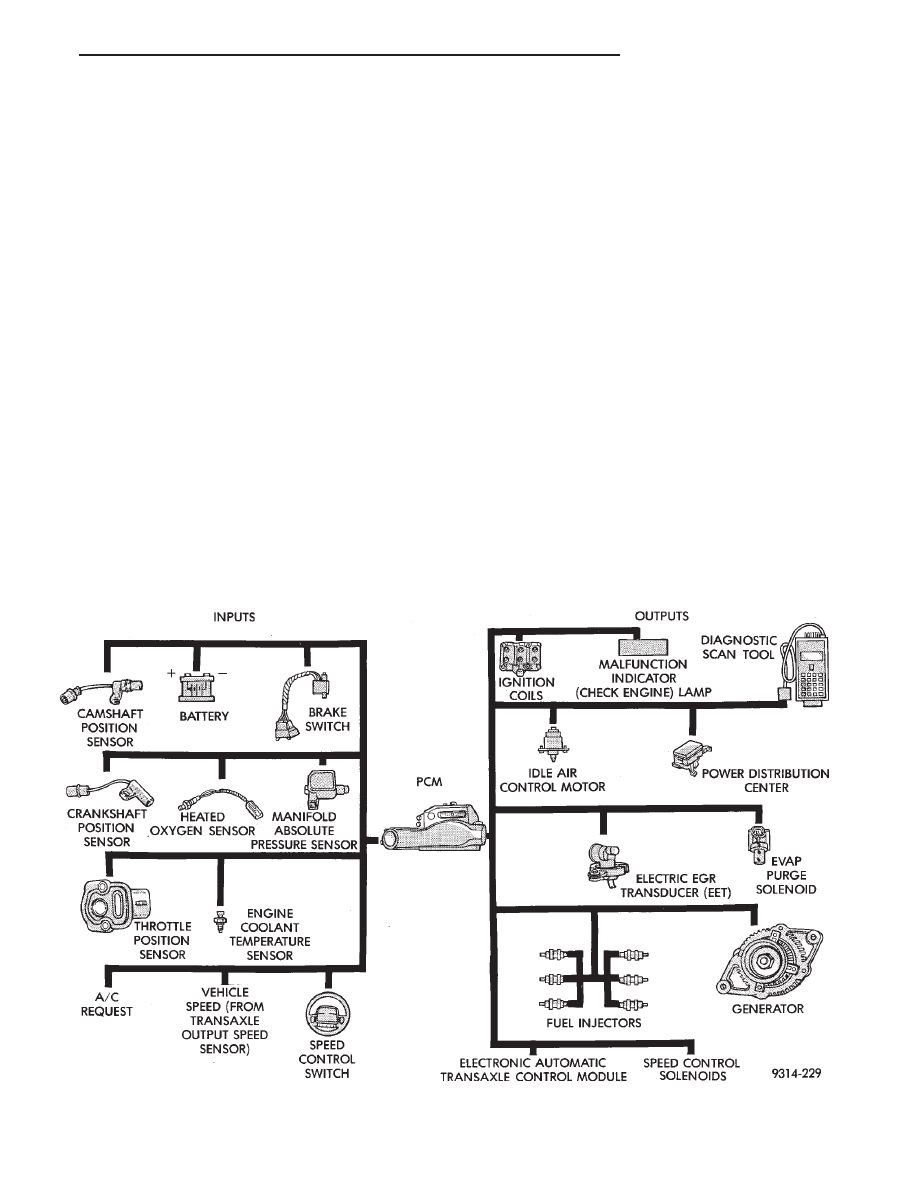Chrysler Le Baron, Dodge Dynasty, Plymouth Acclaim. Manual - part 60

3.3L AND 3.8L MULTI-PORT FUEL INJECTION—GENERAL DIAGNOSIS
INDEX
page
page
Fuel System Diagram
. . . . . . . . . . . . . . . . . . . . 157
Visual Inspection
. . . . . . . . . . . . . . . . . . . . . . . . 157
FUEL SYSTEM DIAGRAM
Refer to the Component Identification portion of
this section for a more complete description of the
components shown in Fig. 1.
VISUAL INSPECTION
Perform a visual inspection for loose, disconnected,
or misrouted wires and hoses before diagnosing or
servicing the fuel injection system. A visual check
saves unnecessary test and diagnostic time. A thor-
ough visual inspection includes the following checks:
(1) Check ignition cable routing from the coil pack
to the spark plugs. Verify the cable are routed in the
correct order and are fully seated to the coil and
spark plug.
(2) Check direct ignition system (DIS) coil electri-
cal connection for damage and a complete connection
to the coil (Fig. 2).
(3) Verify the camshaft position sensor electrical
connector is connected to the harness and not dam-
aged (Fig. 3).
(4) Ensure the engine temperature sensor electri-
cal connector is connected to the sensor and not dam-
aged (Fig. 3).
(5) Ensure the coolant temperature sensor electri-
cal connector is connected to the sensor and not dam-
aged (Fig. 4).
(6) Verify the quick connect fuel fittings are fully
inserted on the fuel supply and return tubes.
(7) Check the vacuum hose connection at the fuel
pressure regulator for damage or leakage (Fig. 5).
(8) Check the oil pressure sending unit electrical
connection (Fig. 6).
(9) Verify the electrical connector is attached to
the Purge Solenoid (Fig. 7) and not damaged.
(10) Verify the vacuum connection at the purge so-
lenoid is secure and not leaking (Fig. 7).
Fig. 1 Multi-Port Fuel Injection Components
Ä
FUEL SYSTEMS
14 - 157